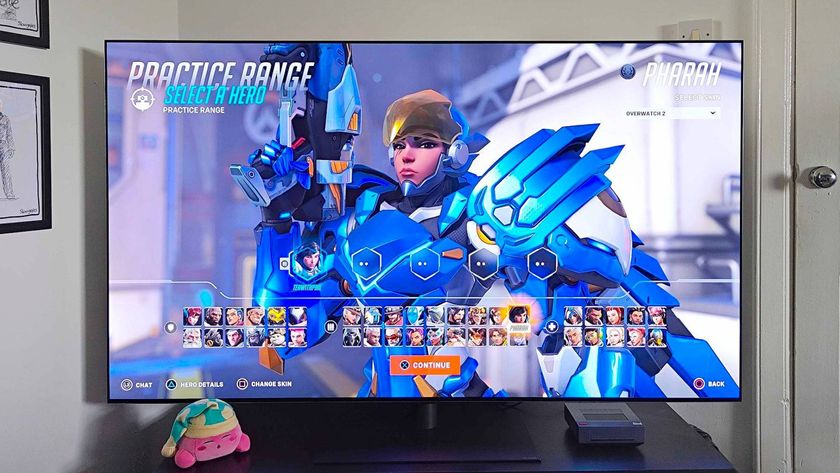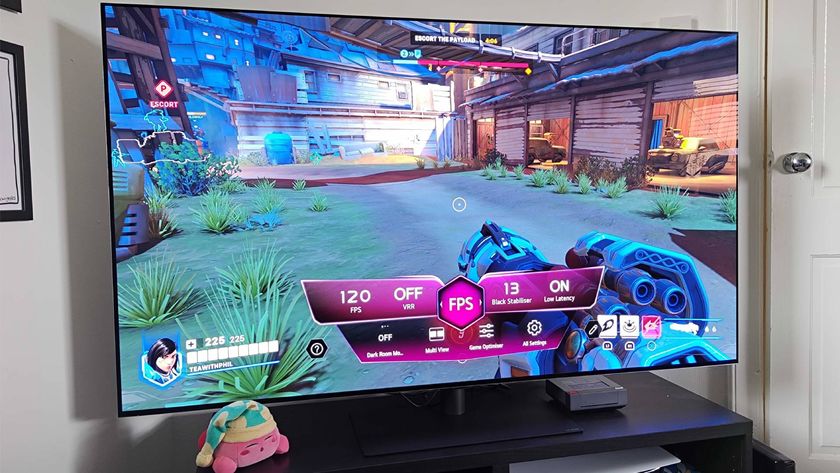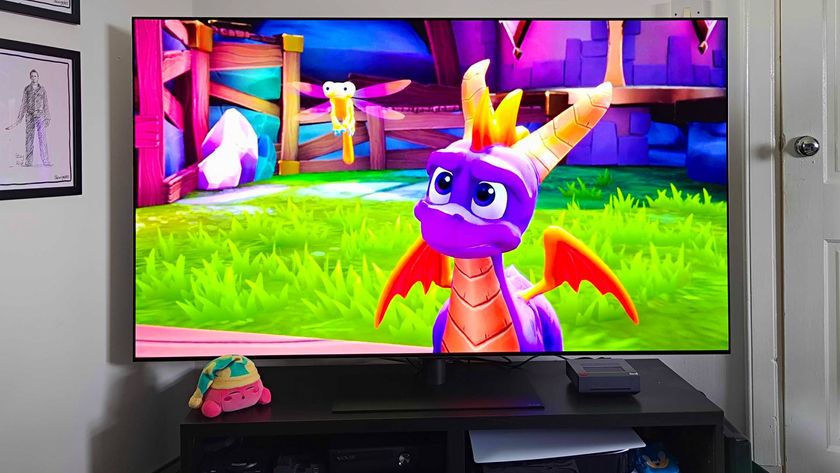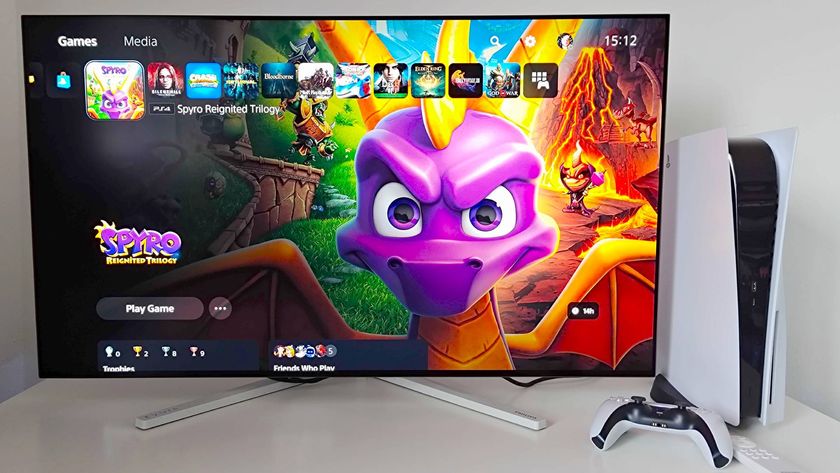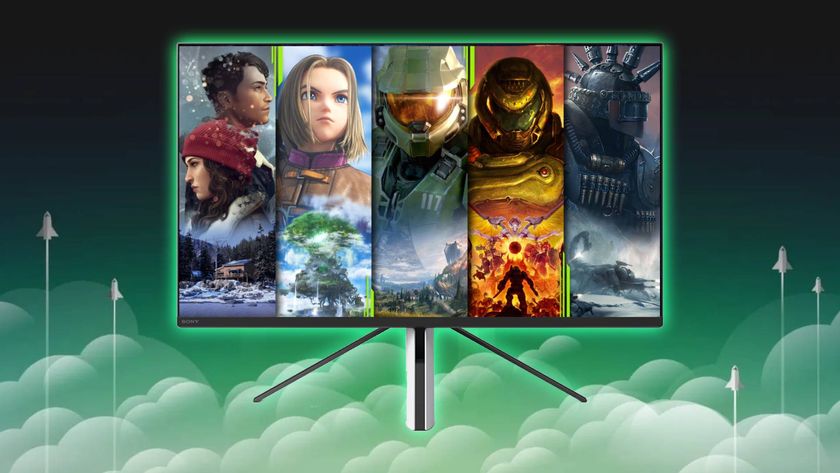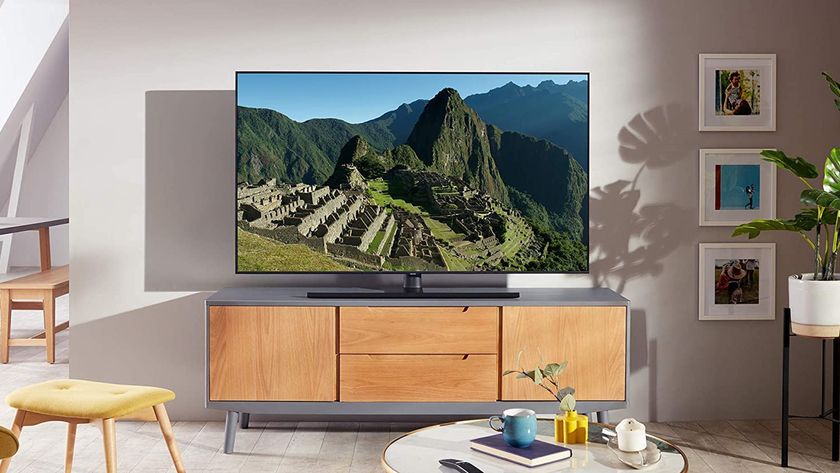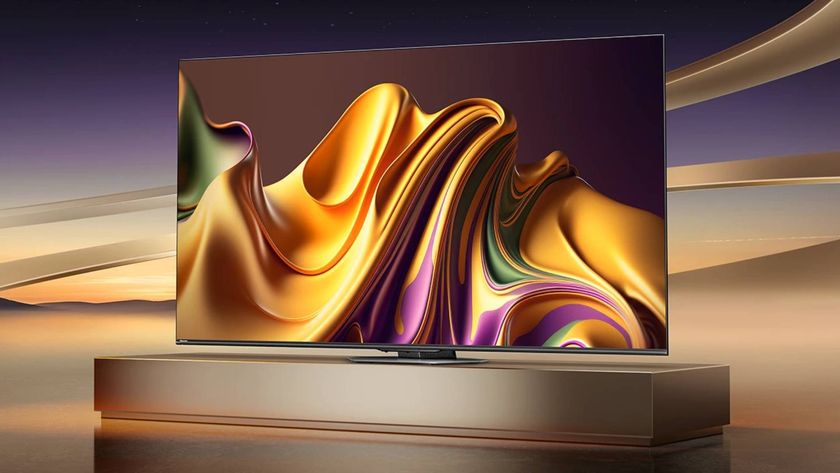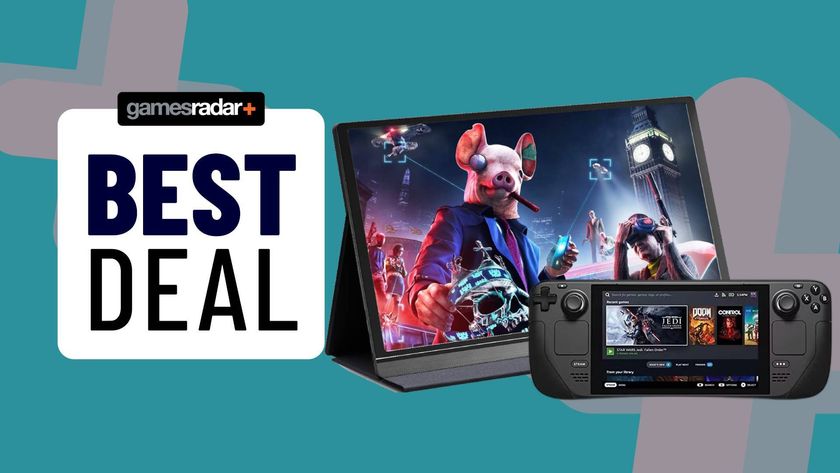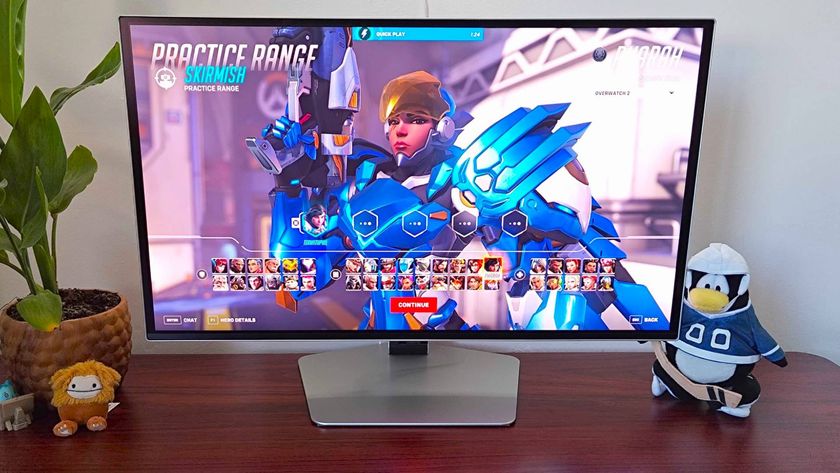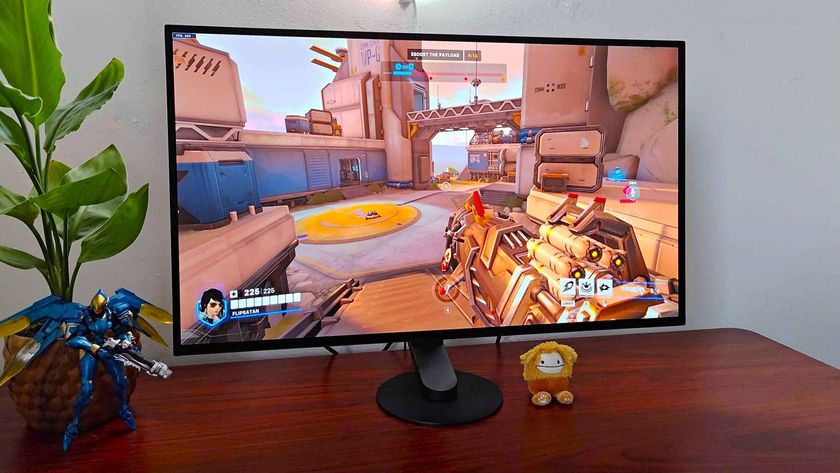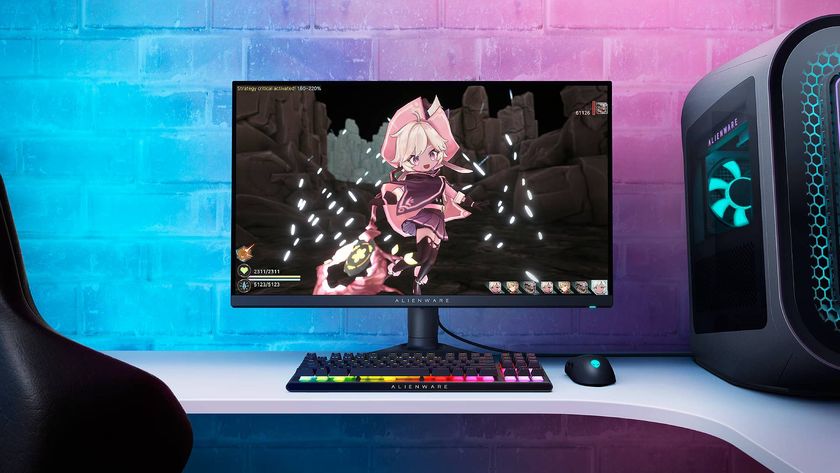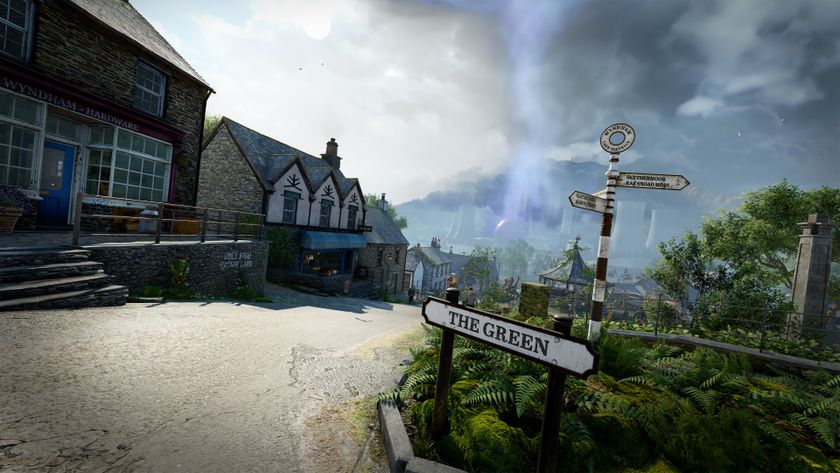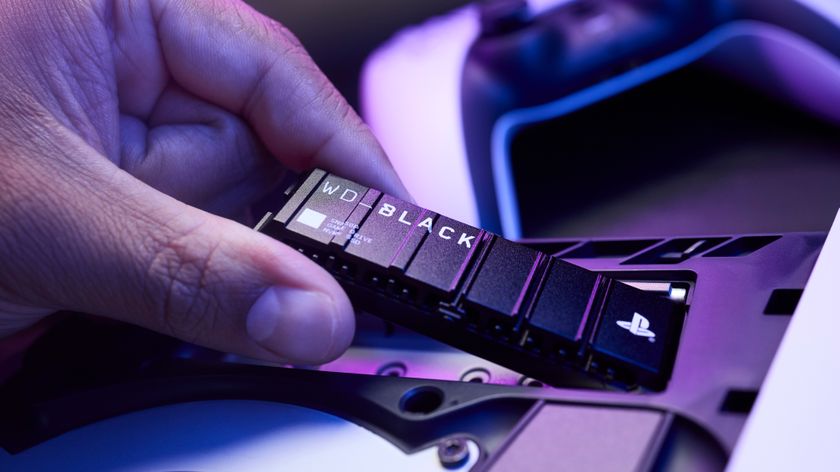Best TV for PS5 and Xbox Series X 2025
What to look for when buying the best TV for PS5 and Xbox Series X
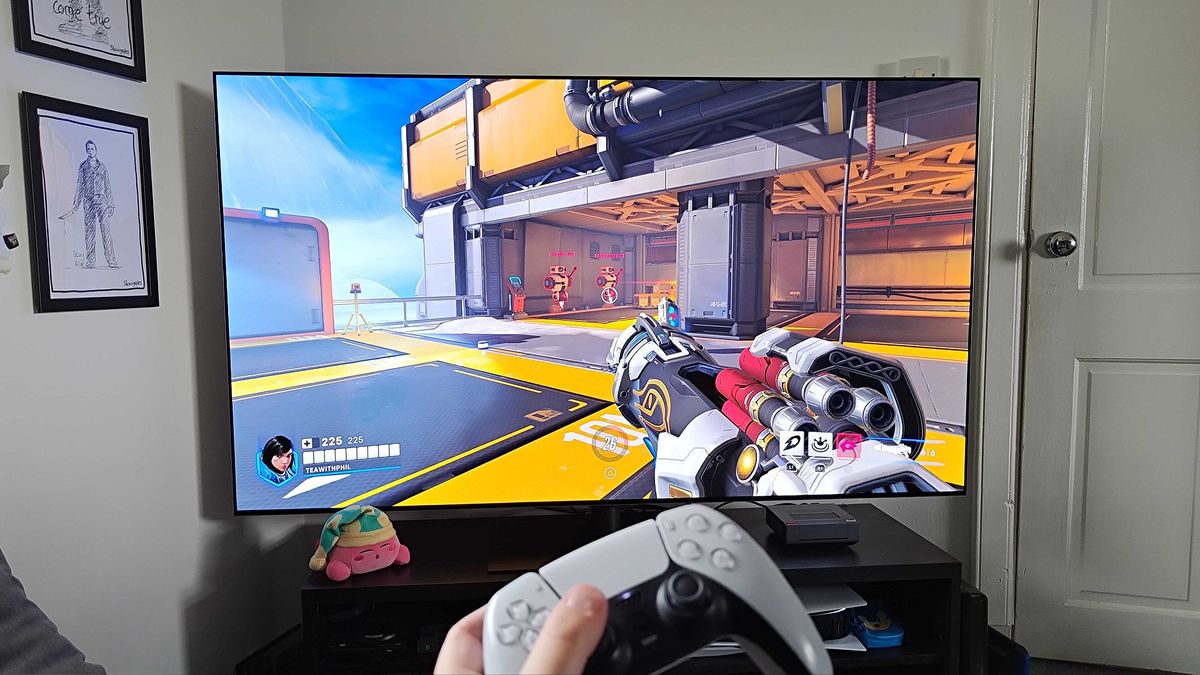
Picking up the best TV for PS5 and Xbox Series X in 2025 will do wonders for your console setup. That's before you even get to the fact it'll help run games at 4K 120Hz, as even simply switching out your aging screen for a newer mini LED or OLED model will breathe life into your visuals. You don't even have to spend a pretty penny to grab a fantastic display these days, as I've tested plenty of models that pack great specs at a lower price point.
Overall, the best TV for PS5 and Xbox Series X is the LG OLED G4. While there are a variety of other panels I'd recommend for console, the 4K 144Hz display provides superb contrast and fidelity thanks to its Micro Lens Array (MLA) tech while offering futureproof specs that'll pair nicely with your PC too. Its upscaling abilities are also on point, so if you have a Steam Deck or Nintendo Switch as a secondary console, they'll also look pretty swish.
I'm continually testing the best gaming TV options, and while it's easy to pick a winner, sometimes the right option strikes a specific balance between specs and price. Not everyone is going to vibe with the same screen for PS5 and Xbox Series X, so I've rounded up a bunch of the greatest panels I've tried to date with different use cases and budgets in mind.
The quick list
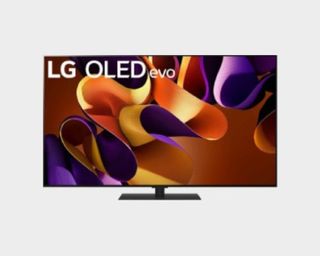
LG's latest OLED screen packs 4K 144Hz performance and a super vibrant panel.
Read more below
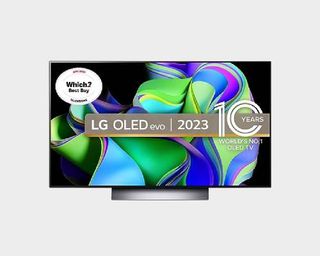
A more affordable version of LG's latest OLED panel, and it still packs a gaming punch.
Read more below
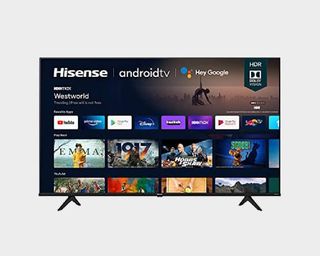
It's one of the cheapest on our list, but it's both incredible value for money and packs a bunch of great features.
Read more below
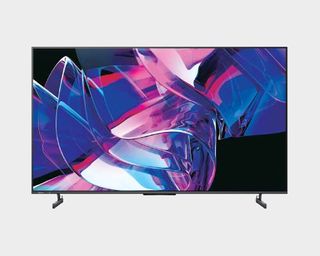
For far less than its rivals, you're getting a speedy 144Hz panel with a mini LED kick.
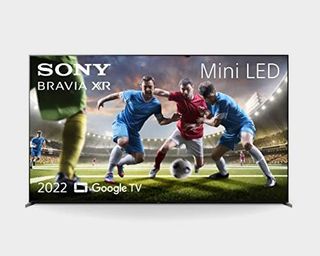
Sony's Mini LED Bravia screen offers up fantastic 4K capabilities and surprisingly good contrast.
Read more below
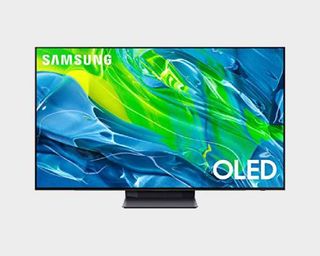
Or favourite Samsung TV boasts a speedy refresh rate and bright visuals.
Read more below
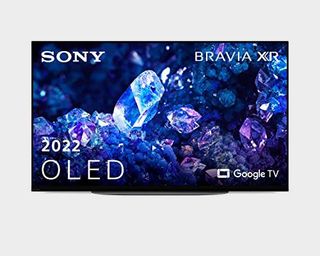
Bigger isn't always better, and the A90K packs incredible specs into a smaller 42-inch footprint.
Read more below

Phil started off their gaming hardware love affair plugging consoles like the PS1 into CRT TV. Since then, they've continued to experiment and test each Sony and Microsoft console with a variety of screens on an endless quest to create the best setup. That'll soon mean pairing the PS5 Pro with lavish new 4K 144Hz panels, and we'll no doubt see more displays suited to new and old versions in the year ahead.
The best TV for PS5 and Xbox Series X




Specifications
Reasons to buy
Reasons to avoid
Out of all the high-spec TVs on the market, the LG OLED G4 provides the mightiest punch when paired with a PS5 or Xbox Series X. The panel pairs excellent 4K 144Hz capabilities with an MLA-enhanced screen and vibrant visuals, all while packing plenty of extras that will universally benefit gaming setups.
✅ You want the best: The G4 is arguably the TV available right now, and its specs and features are a cut above the rest.
✅ You need faster refresh rate: If you're planning on playing 120Hz-supported games like Overwatch 2, you'll benefit more from this speedy screen.
✅ You prefer bigger screens: With sizes up to 83 inches, the G4 is designed to dominate your living room wall.
❌ You'd prefer to spend less: The G4 is a flagship model with a premium price tag, and there are various alternatives out there that cost a far less.
❌ You aren't fussed about OLED: If you've got a more limited budget and currently have a standard LED panel, making the jump to QLED instead could be just as impressive and save you some pennies.
Features: LG's latest flagship model feels like the perfect gaming TV ensemble. Yes, there are other 4K 144Hz panels on the market for less, but none of the cheaper options can quite pull off the same inky blacks, tremendous colors, and impressive upscaling when dealing with lower resolutions. Plus, if you do decide to pair the screen with a gaming PC, you'll have graphics card features like FreeSync Premium and Nvidia G-Sync on hand to combat high frame rate screen tearing.
Design: The G4 embodies the idea of balancing sleek design with robust build quality, resulting in a TV that'll look modern in your living space while surviving the test of time. The panel itself is encased in a metal shell, and while that might feel like it'd make for a bulky display, it features next to no bezel and takes advantage of having a thin OLED screen. Most of the bulk is confined to a subtle hump at the back, which provides easy access to the TV's array of ports.
Unlike the previous G3 model, this one comes with a pedestal stand, and its low-profile enough to still accommodate soundbars and other external audio solutions over the top. That's a biggie since some models insist on coming with an over-designed base that simply gets in the way, so kudos to LG for this fairly traditional rectangular approach.
Performance: Naturally, the OLED G4 has speed on its side thanks to its 144Hz abilities, and those make all the difference when playing competitive shooters on PS5 and Xbox Series X. I played a bunch of Overwatch 2 on the G4, and while I normally play on PC, the TV helped everything feel ultra slick on a controller. At the same time, the LG's OLED panel pulls off tremendous colors in vibrant single-player games, with Spyro: Reignited Trilogy standing out as a prime example, and your 4K Blurays are going to look incredible on this display.
Verdict: One of the only pitfalls tied to the OLED G4 is price, as you're looking well over $1,500 for most sizes. Those prices will come down throughout 2025, especially as we draw closer to the LG OLED G5's arrival. But for now, this is the premium TV to pick if money isn't a factor and you want ann elevated living room gaming experience.
Read more: LG OLED G4 review
The best TV for PS5 and Xbox Series X for most people
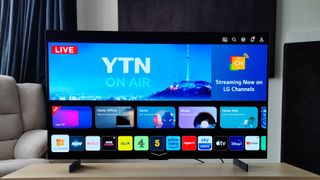
Specifications
Reasons to buy
Reasons to avoid
If you're looking for an excellent 4K 120Hz TV that'll pair nicely with your console for a little bit less, the LG OLED C3 is worth checking out. Don't get us wrong, it's still pretty expensive, but it follows in the footsteps of its pricer G3 sibling and offers many of the same features at a lower MSRP.
✅ You want to spend a bit less: The C3 costs substantially less than LG's flagship, but it still provides similar premium specs that'll pair nicely with the PS5 and Xbox Series X.
✅ You're looking for 4K 120Hz: Just like its G3 sibling, the C2 is 4K 120Hz, so you won't need to worry about harnessing every frame in supported games.
✅ You prefer OLED: If you feel like you can't go back to vanilla LED screens, this OLED panel packs a punch that stands out from the crowd.
❌ You're on a budget: The C3 might be cheaper, but it still costs a chunk more than many other models out there, and it's not what we'd call budget friendly.
❌ You want superior HDR: We found the C3's HDR abilities to be slightly lacking while testing the 42-inch model, so keep that in mind if you're eyeing up the smallest size.
Features: The LG C3 might cost less than the flagship, but it's actually packing many of the same features. 120Hz refresh rate, HDR10, and VRR are all present in this model, so opting for the cheaper version doesn't necessarily mean trading away specs. That said, this version lacks the Micro Lens Array (MLA) panel included with the G3, meaning its OLED visuals aren't quite as punchy.
Design: It's safe to say the C3 is one of the slickest looking TVs on the market, featuring a similar bezel-less design to the G3. However, unlike the flagship, this version comes with a stand, meaning it'll happy sit on top of your existing unit or desk. Just keep in mind that the smaller 42-inch model is chonkier at the back, which could matter if you do want to stick it up on a wall.
Performance: It might lack the brightness algorithms and MLA tech of the G3, but the C3 still provides exceptional visuals. Striking contrast and color all hold up to our OLED standards, but the experience admittedly isn't dramatically different compared to the older LG OLED C2. HDR also let the side down a little this time around, with the smaller 42-inch version producing slightly lower brightness than larger variants.
Verdict: If you've sort of got a budget you're sticking to but crave OLED excellence, the LG OLED C3 will fill the brief. It's still what we'd consider a premium panel, but the price gap between it and the G3 means more players will likely opt for it over the flagship model.
Read more: LG OLED C3 review
The best TV for PS5 and Xbox Series X under $500
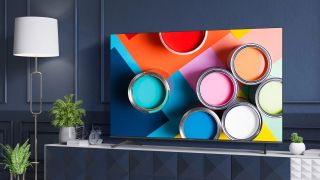
Specifications
Reasons to buy
Reasons to avoid
The Hisense A6G is one of the cheapest gaming TVs on this list, but it still provides plenty of features and great image quality for the price. It might be entry level, but if you're merely looking for a decent UHD screen for your PS5 or Xbox Series X, this killer 4K panel is going to bring excellent capabilities to your living room setup.
✅ You're on a strict budget: The A6G strikes a nice balance between specs and price, and it costs less while still offering console specific features.
✅ You're not fussed about 120Hz: Not everyone is bothered about refresh rate, and sticking with 60Hz comes with cost benefits.
✅ You're looking for something big: Even the 65-inch model costs under $500, so you'll end up with a lot of TV for the money.
❌ You play a lot of FPS games: Playing games like Overwatch 2 at 120Hz is pretty neat, so it's worth considering whether 60Hz will feel sluggish.
❌ You need brighter HDR: During testing, we found that the A6G's HDR was a little dim, which may hamper your experience when watching movies and playing games.
Features: Available in five screen sizes, from small to massive, this new Hisense A6G TV for PS5 and XSX is one of the best value 65-screens you can buy. While the it lacks 4K 120Hz support (we are paddling in budget waters here) its ports support ALLM (Auto Low Latency Mode) and VRR (Variable Refresh Rate), plus eARC. Also, Hisense claims an input lag of better than 20ms, but we measured it at a slower 48.2ms (1080/60) with Game mode selected during our testing.
Design: At a glance, the A6G doesn't even look like a budget TV, as it features the same slim bezel as other more expensive options. Arguably, the days of cheaper aesthetics are becoming a thing of the past, and that's certainly the case for most Hisense models across the board. While the base uses feet rather than a pedestal stand, they're fairly central, so popping it on top of an Ikea bench shouldn't be too much of an issue.
Performance: The A6G provides decent results all round, with excellent fine detail and reasonable dynamics. Dolby Vision helps a lot, effortlessly making the set shine with Dolby Vision shows. We found the motion handling is accomplished too: 60Hz MEMC (Motion Estimation Motion Compensation) interpolation, presented in a variety of strengths, works well for general TV and sport.
The US iteration has Android TV with Chromecast built-in, while the UK version of the A6G comes with Hisense’s own Vidaa smart platform, plus Freeview Play - that translates to a good selection of streaming and catch-up players.
Verdict: We'd be lying if we said the lack of 120Hz support wasn't a bummer, but for under $500, the Hisense A6G is a steal. It has some shortcomings, especially when it comes to brightness and HDR, but its price and features more than make up for any of its minor flaws.
Read more: Hisense A6G review
The best value TV for PS5 and Xbox Series X





Specifications
Reasons to buy
Reasons to avoid
The Hisense U7K is proof that 144Hz TVs don't need to cost a fortune, and this mini LED panel brings a lot to the PS5 and Xbox Series X table. It's actually also a fantastic gaming monitor alternative if you want something super-sized
✅ You want faster visuals: The U7K can ramp refresh rates up to 144Hz and satisfy the capabilities of new-gen consoles and high-end PCs.
✅ You need something bright: If you find that sunny days disrupt your Netflix binge sessions, this mini LED model will punch through any glare.
✅ You're trying to avoid OLED: If even the slight risk of burn-in has you worried, te U7K will save you from stressing.
❌ You won't use 144Hz: If you're going to be using a Nintendo Switch or playing games with lower frame rates, this TV won't be as beneficial.
❌ You want fantastic HDR: If you wouldn't dream of gaming or watching movies with HDR switched off, you might want to shop around.
Features: The U7K enters the pitch with a mini LED panel that challenges many of the top models on brightness, especially compared to cheaper OLED models. Pair that boon with the TV's 144Hz game mode and you've effectively got a high-spec screen that'll satiate the frame rates capabilities of the PS5 and Xbox Series X with some headroom to spare. Yes, you could go hunting for a 120Hz model instead, but there's every chance you'll max out this model's refresh rate when the PS6 and next Microsoft consoles arrive.
Design: As far as big rectangular TVs go, the U7K is pretty slick, offering up almost no bezels and not much junk in the trunk. Remarkably, Hisense has managed to make this value TV feel high-end by using metal casing, putting some big branded alternatives to shame with its build quality. The model's center stand is also makes from a nice change from the usual offering of pedestals and side feet, even though it'll stop you from easily parking your gaming sound system underneath.
Performance: There's something spectacular about being able to enjoy 144Hz visuals in your living room without retreating to your gaming desk, and the U7K doesn't disappoint. With a PS5 and an RTX 4090 gaming PC connected, Hisense's contender kept things snappy and avoided any noticeable latency issues. Color is admittedly lacking when it comes to UHD streaming on the likes of Disney+, but games like Baldur's Gate 3 are nice and vibrant. HDR is a slight letdown, so keep that in mind if you're all about using High Dynamic Range.
Verdict: For the price, it's extremely hard to argue with what the Hisense U7K has to offer, particularly when it comes to speed and brightness. In honesty, if this set doesn't satisfy your gaming needs, you'll likely have to either consider spending over $1,000 or consider upgrading to an OLED panel.
Read more: Hisense U7K review
The best Sony TV for PS5 and Xbox Series X






Specifications
Reasons to buy
Reasons to avoid
The XR-75X95K is Sony’s first ever TV to deploy Mini LED technology - a system where using much smaller LED backlights allows far more of them to be squeezed into the TV’s 75-inch screen, delivering potentially more brightness and, even more importantly, finer light controls.
✅ You've got a PS5: The XR-75X95K is part of Sony's 'Perfect for PlayStation 5' ecosystem, which grants it access to features like auto HDR tone mapping and auto genre modes.
✅ You're looking great contrast: Sony's mini LED tech holds up against its OLED competition, and it's brightness benefits HDR content.
✅ You're after great audio: If you're looking for speakers with a bit of oomph, you'll be pleased with the XR-75X95K's Dolby Atmos capabilities.
❌ You prefer slimmer TVs: Despite using mini LED tech, the XR-75X95K is pretty thick round the back, and it's pretty weighty to boot.
❌ You require super sharp motion: Some motion occasionally looked soft during testing, something that'll may impact fast moving scenes in games and movies.
Features: Sony's debut mini LED panel is naturally premium, so its 4K 120Hz capabilities are perhaps to be expected. Additional perks like VRR mean it's also going to pair nicely with the PS5, which again, makes sense given the demands of new-gen players. That said, it's not going to completely fill the brief for PC players, as it's missing G-Sync and FreeSync support. That's a bit of a pity, but it's not going to matter so much if you primarily play games using a console.
Design: Aesthetically, the XR-75X95K is a bit of a beast. Its sides and back are chonkier than you'd expect given its use of mini LEDs, and it's notably heavier to lift than modern OLED alternatives. Not necessarily a bad thing given that it helps it feel studier build quality wise, just don't try and set it up on your own.
There is something particularly appealing about the pattern used to decorate the back, with an engraved grid adding extra, if not unnecessary flair. We're also big fans of the TV's narrow chrome feet, which both blend into the background and provide sturdy support from the centre rather than each side.
Performance: You’d never guess this was Sony’s first Mini LED rodeo from its picture quality. Immediately we were struck by how bright and colourful its images looked with both gaming and video sources, with its brightness, in particular, pushing comfortably beyond anything OLED screens can currently achieve.
Black levels and backlight controls are mostly excellent by LCD TV standards too (if you can avoid watching from a wide angle, anyway), while the potent visuals are joined by a powerful, detailed and dynamic audio performance that rounds out the TV’s cinematic credentials perfectly. Occasional softness when showing motion and minor ‘flatness’ with mid-dark imagery don’t even come close to stopping the 75X95K from being overall an outstanding TV for its money.
Verdict: If you're on the hunt for a premium Sony screen, the XR-75X95K is probably the panel you're looking for. It's going to serve both PS5 and Xbox players exceptional contrast and colors, but the former will benefit from auto HDR tone mapping and auto genre picture mode thanks to the company's 'Perfect for PS5’ initiative.
Read more: Sony XR-75X95K review
The best Samsung TV for PS5 and Xbox Series X
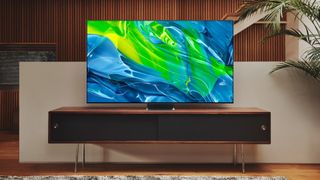
Specifications
Reasons to buy
Reasons to avoid
Gloriously slim, with class-leading luminosity, this Samsung S95B (the company's first QD-OLED display) is eye-catching in every sense and could be the ground-breaking new TV for PS5 or Xbox Series X we've all been waiting for.
✅ You need a super bright OLED TV: Boasting consistent brightness and exceptional blacks, this Samsung QD-OLED TV is a game changer.
✅ You appreciate smart features: Samsung's Tizen smart platform is pretty comprehensive and feeds into the brand's SmartThings ecosystem.
✅ You're looking for low latency: This 4K 120Hz screen provides exceptional low latency visuals, making it a nice fit for shooters and fast paced fighting games.
❌ You need something bigger: The biggest model you can grab is 65-inch, which may deter players looking for monstrous screen sizes that'll fill a wall.
❌ You'd rather not risk burn in: This applies to all OLED models out there, but it's worth keeping in mind if you prioritise longevity over screen quality.
Features: Combining the characteristic OLED black levels with the high peak brightness and the expanded colour volume of Quantum Dot technology, the Samsung S95B is a superb choice - particularly if you prefer to use your TV in a room with high levels of ambient light.
All four HDMI inputs are v2.1 and support 4K 120fps sources, while there's also VRR (Variable Refresh Rate) with NVIDIA and AMD FreeSync support, plus ALLM (Auto Low Latency Mode). Samsung also has a dedicated Game Hub interface. Input lag is low in Game mode; we measured it at 9.6ms (1080/60). HDMI 3 also has eARC, for use with a Dolby Atmos soundbar. In addition to this HDMI quartet, there’s a trio of USBs, a digital optical audio output, and Ethernet, and wireless connectivity covers Bluetooth and Wi-Fi - so you're well catered for no matter your setup
Design: In complete contrast to the Sony mini LED model mentioned above, the Samsung S95B is eye-catchingly slim. The TV maker itself refers to the design as 'LaserSlim', and its easy to see why given its wafer aesthetic. It also brings new meaning to the phrase bezel-less, as there's practically no sign of a frame surrounding the panel.
Performance: The image quality is spectacular. The level of detail is excellent, and its HDR performance is remarkable. We measured peak HDR brightness in excess of 1400 nits. Unfortunately, there’s no support for Dolby Vision, but you do get HLG, HDR10, and HDR10+ compatibility. It’s not just peak HDR brightness which glows: the set’s average picture level is high and this makes it easy to view in bright rooms, but can make for a fatiguing watch. It’s not subtle, and even the Game mode looks overwrought. On the plus side, 4K 120fps playback is buttery smooth.
Of course, the key attraction of the S95B is its QD-OLED panel and matching Neural Quantum Processor. The latter uses AI-driven Optimization to manage sound and vision, so you don’t need to think too much about it.
Verdict: All things considered, the Samsung S95B is a highly impressive QD-OLED debut. Its peak brightness is phenomenal, and colour depth is high. It never looks particularly cinematic though, and even in Game mode, pictures can seem over-saturated. Some will love the presentation though, and it's just a superb, sublime TV for gaming on PS5 and Xbox Series X. This could be how a whole new range of gaming TVs look in the future.
Read more: Samsung X95B review
Best small scale TV for PS5 and Xbox Series X






Specifications
Reasons to buy
Reasons to avoid
The Sony A90K might be relatively bijou, but it’s packed with advanced picture-making tech. Also available in a 48-inch version, this set shines as both a near-field gaming monitor, an everyday TV, and one of the best TVs for PS5 and Xbox Seres X that money can buy.
✅ You're looking for a smaller TV: The 42-inch version of the A90K is pretty dinky considering its specs, and smaller screens are becoming less common in the TV space.
✅ You aiming for 120Hz: Sure, you could pick up a monitor with a faster refresh rate instead, but this TV is still speedy and brings TV features to the table.
✅ You seek exceptional contrast: Sony’s advanced XR OLED Contrast Pro tech provides phenomenal dynamics and HDR performance.
❌ You need a slimmer screen: It might be small, the AK90 is girthy at the back, and its stand will take up a chunk of space on your TV bench or desk.
❌ You're looking to pay less: The 42-inch AK90 can cost over $1,500, and opting for the smaller size won't save you any money.
Features: The star of the show, and key to its outstanding image clarity, is Sony's Cognitive Processor XR, which cleverly prioritises the elements of an image that our eyes naturally focus on. The result is a presentation that’s always detailed and dynamic. The A90K looks great with 4k streaming services, and the 4K 120fps gameplay is velvety smooth.
A downsized version of Sony’s Acoustic Surface Audio+ delivers crisp audio, courtesy of actuators that vibrate the screen. This technology works fine for dialogue clarity, but falls short when it comes to bass depth; the A90K can sound a little thin. There are four HDMI inputs, two of which are v2.1 enabled and capable of 4k 120fps playback. These also support VRR (Variable Refresh Rate) and ALLM (Auto Low Latency Mode). One of the v2.1 inputs supports eARC but that happens to be one of the HDMI 21. ports... The set also has two USB inputs, a digital optical audio output, and Ethernet for Bluetooth and Wi-Fi connectivity.
Design: The 42-inch version of the A90K might be small, but it's actually pretty weighty. That helps provide a sense of sturdiness, with its lozenge-shaped 2-way aluminium pedestal adding extra girth. Worth noting if you're working with a narrower TV bench or gaming desk, as it's definitely not as think as a gaming monitor.
Performance: Overall HDR performance is great, with high peak brightness measured at 700 nits with a 5 percent patch. HDR support covers Dolby Vision, HDR10, and HLG, but there’s no compatibility with HGiG, the HDR gaming standard. Connect a PlayStation 5 and you’ll benefit from Auto HDR Tone Mapping and Auto Genre Picture mode selection, which is useful. Input lag is average though, just 15ms (1080/60).
Verdict: If you need a dinkier display, the Sony A90K is a superb-looking small-screen OLED TV that'll pair wonderfully with the PS5 and XSX. So long as you take note of our gripes before picking one up, you're sure to be satisfied with what this 42-inch package has to offer.
Read more: Sony A90K review
Tech speak - features to look out for
Why you can trust 12DOVE
There are some particular terms to look out for when scouting for the best TV for PS5; swot up here.
The first is the ubiquitous, dedicated Game modes that will adorn all modern TVs. These tend to eliminate picture processing to reduce input lag. Low input lag is vital when it comes to competitive gaming, but is largely irrelevant if you’re spending your time on Animal Crossing. Low input lag without all that processing sugar and spice, means eye candy gets lost. This is why Samsung offers two tiers of Game Mode - more of which later. Unacceptable input lag for gaming on a TV is anything higher than 30ms. Some of our chosen screens offer a blistering 15ms or lower.
Other niceties to look for are VRR and ALLM. The latter is more common than the former. ALLM (Auto Low Latency Mode) allows a TV to automatically switch to Game mode when it receives an ALLM signal from your console. When an ALLM signal ends, the TV reverts to its previous picture mode. It’s a convenience feature, simply put.
HDMI VRR (Variable Refresh Rate) is a standard adopted by game consoles that allow games to supply a TV with a frame as soon as it is rendered. This ensures low input lag, and eliminates the judder and tearing artifacts which can be seen if a frame is sent at a fixed frequency that doesn’t align with the rendering speed. In short, HDMI VRR is a good thing, although you’ll only find it on more expensive TVs. The only TV maker currently offering VRR and ALLM, along with high frame rate 4K video is LG.
FAQ
Does it matter what TV you have for Xbox Series X?
To some, choosing the right TV for Xbox Series X will matter, particularly if you're looking to embrace high frame rates and resolution. Technically, you'll be able to use any display with HDMI input, but older displays are going to be lower res, and you'll unlikely find an old television with 120Hz support. Simply put, if you want to get the most out of your new-gen console, hooking it up to a high-spec screen is the way to go.
What TV screen type is best for PS5 and Xbox Series X?
Deciding what TV screen type to pair with PS5 and Xbox Series X is down to personal preference, but there are clear benefits to opting for specific panels. For example, an OLED screen will dress up your favorite games with vibrant colors and contrast, whereas a mini LED or QLED screen will be able to achieve better brightness. Display tech aside, you'll also want to think about other specs like refresh rate, as 120Hz are now a norm and can help FPS games feel much slicker on console
What TV should you buy for PS5?
Technically, any TV that has an HDMI input will work with the PS5. However, if you make sure to choose something with HDMI 2.1 capabilities, you should be able to play supported adventures at 4K 120Hz, providing the panel can handle that refresh rate.
Do you need a 4K 120Hz TV for Xbox Series X and PS5?
Using a 4K TV for Xbox Series X and PS5 isn't mandatory, as both will play nice with 1080p and 1440p screens. That said, the console is designed to run games using a UHD resolution, and everything is going to look at bit sharper if you use a display that matches its capabilities.
Do most 4K TVs support 120Hz?
Most TVs out there right now use 60Hz refresh rate, but more 120Hz models are emerging onto the market. You will typically pay more the latter, but if you're eyeing up a premium Samsung or LG display, chances are it's rocking a screen that can reach those speeds. There are even 144Hz sets creeping onto the scene, which will come in handy if you're planning on using your PC in the living room.
Should you upgrade your TV for PS5?
Upgrading your TV to match PS5 specs will help you get the most out of the new-gen console. but it's not an necessity. While Sony's latest platform does support 4K 120Hz in some games, you'll find that UHD and faster refresh rates aren't always necessary. That's not to say upgrading your screen isn't a good idea, as it'll help futureproof your setup, but you won't need to rush out and buy a premium panel to play PlayStation 5 games right away.
How to choose a TV for PS5 and Xbox Series X
When choosing a TV for PS5 and Xbox Series X, I'd advise nailing down exactly what you're looking for in your current gen system. Some players will be looking for big, bright 4K visuals that can also make the most of UHD movies. Others will prioritise speed, aiming to play shooters like Overwatch 2 at 120Hz. If you've got the budget, there are models out there that will check all the boxes, but most ordinary players will be looking to strike a balance between specs and price.
When comparing models, you'll want to narrow down your panel preferences. Visiting a physical store can help give your eyes a taster for screen types like OLED and mini LED, even if you're planning to pick up a TV online. If you're not fussed about either, you'll save cash sticking with a traditional LED display, which also applies to players who can't tell the difference between 60Hz and 120Hz.
There's also a chance some of you out there aren't remotely fussed about specs, and you can technically pick up a 1080p for under $100 that'll work just fine with PS5. You won't remotely experience the best visuals possible, but it will work without any hiccups. The only time you really need to worry about compatibility is with HDMI 2.1 devices, as you'll need the newer standard to hit 120Hz in shooters.
How we test TVs for PS5 and Xbox Series X
We spend hours testing a variety of TVs with the PS5 and Xbox Series X to determine whether they're a good match. Using out in depth knowledge of screen technology, we put display specs, design, features, and performance to the test using the latest console games, which ultimately helps us setting on a verdict and review score.
Naturally, testing the best TV for PS5 and Xbox Series X involves playing games at 4K 120Hz, but we typically run multiple tests across various genres to decipher how versatile a screen is. That's vital when it comes to choosing a great console TV, as you may want to use it with next-gen consoles when they arrive.
For more information, check out our full Hardware Policy for a rundown on how we approach all of our reviews and testing.
Looking for something a bit more lowkey to upgrade your setup? Then check out our guides for the best PS5 headsets and best Xbox Series X headsets. We've also listed the best PS5 accessories and best Xbox Series X accessories. We're also showing you how to save on the Xbox Series X price despite stock woes.
Sign up to the 12DOVE Newsletter
Weekly digests, tales from the communities you love, and more

I’ve been messing around with PCs, video game consoles, and tech since before I could speak. Don’t get me wrong, I kickstarted my relationship with technology by jamming a Hot Wheels double-decker bus into my parent’s VCR, but we all have to start somewhere. I even somehow managed to become a walking, talking buyer’s guide at my teenage supermarket job, which helped me accept my career fate. So, rather than try to realise my musician dreams, or see out my University degree, I started running my own retro pop culture site and writing about video games and tech for the likes of TechRadar, The Daily Star, and the BBC before eventually ending up with a job covering graphics card shenanigans at PCGamesN. Now, I’m your friendly neighbourhood Hardware Editor at GamesRadar, and it’s my job to make sure you can kick butt in all your favourite games using the best gaming hardware, whether you’re a sucker for handhelds like the Steam Deck and Nintendo Switch or a hardcore gaming PC enthusiast.
